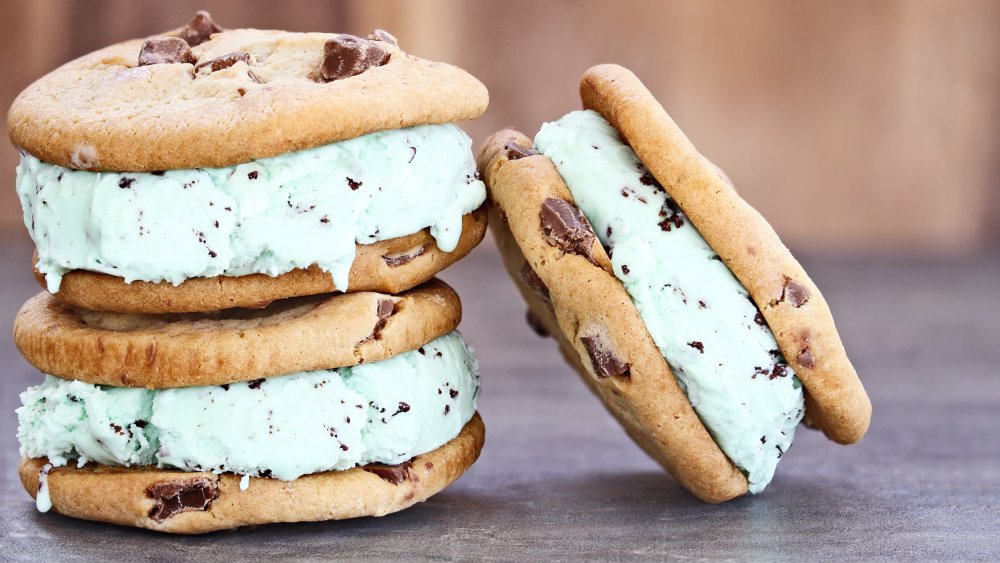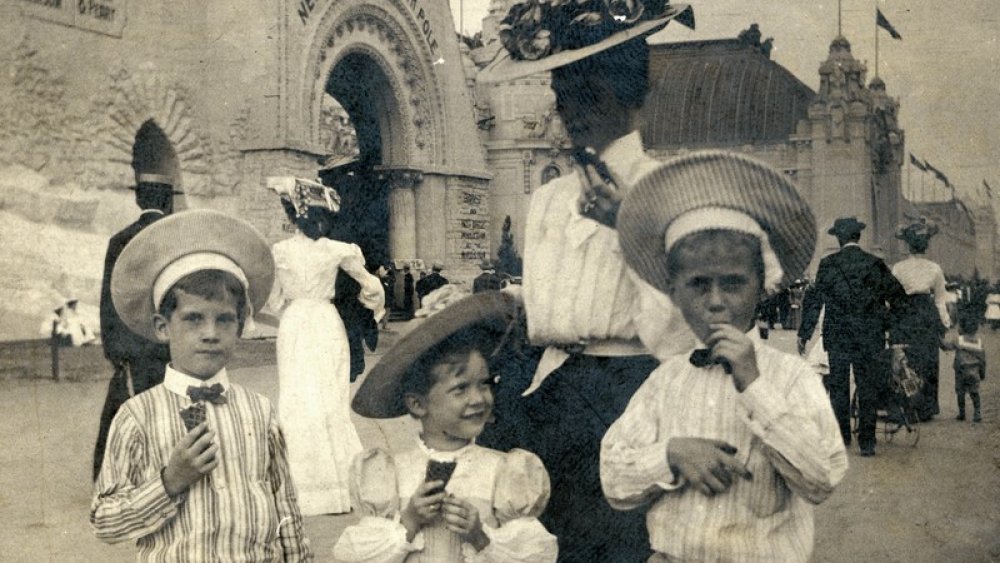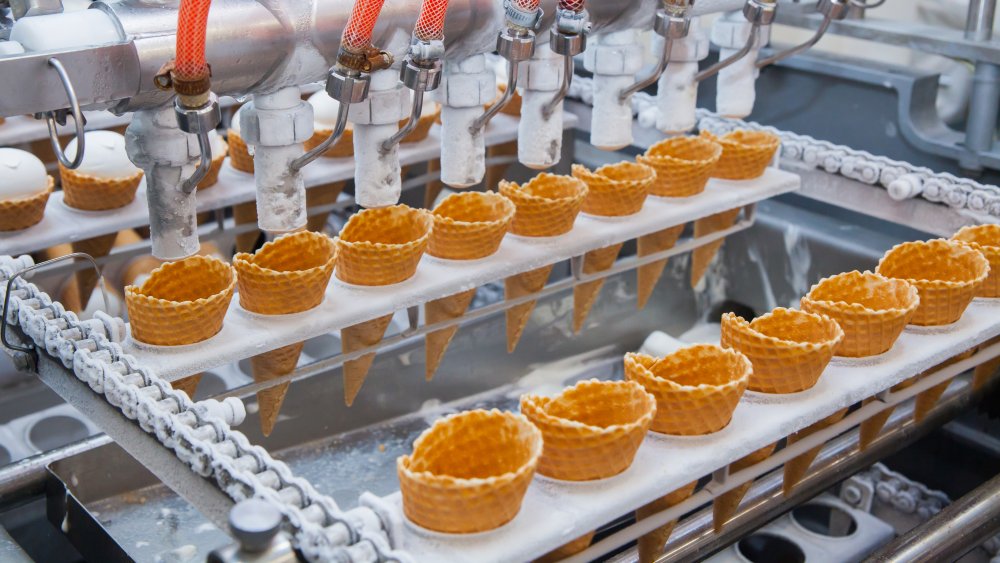The Untold Truth Of Ice Cream Cones
The ice cream cone comes in many different forms. There is the softer cone associated with soft serve; the harder, crunchier type; and everyone's favorite, waffle cones. These cones have an interesting history going back more than a century.
The famous 1904 World's Fair, ubiquitous in stories about history, is part of the story of the ice cream cone (via Serious Eats).
There were many precursors to ice cream cones, though. Ice cream grew in popularity and began being sold by street vendors in the 19th century. The vendors used various types of containers including "penny licks," which were miniature stemmed glasses sold on London streets, which customers returned after eating their ice cream.
As street vendors tried to come up with methods to sell ice cream that could avoid the breakage that accompanied small glasses (as well as the sanitary concerns of reusing them), it is likely that the ice cream cone was born.
As far back as the 1800s, travelers to Germany reported eating ice cream out of edible cones, though the shape is unknown, and France was also using paper and metal cones, though not yet edible cones (via Time).
The journey to ice cream cones
An early type of ice cream that didn't require a dish was the "hokey-pokey," which was created by London street vendors in the 1870s. They were similar to Neopolitan ice, made from a blend of water and milk, and thickened with cornstarch and sugar. The concoction was then frozen and pressed into molds that could be sliced. The slices were then wrapped in white paper and sold by street vendors.
These desserts were brought to the northeastern United States and the idea traveled out from there. The popularity of them demonstrated that people wanted single-use containers for ice cream.
Italian immigrants were the most innovative when it came to ice cream. They got rid of the hokey-pokey's paper wrapper and instead put the ice cream concoction between two square sweetened wafers, creating an early version of an ice cream sandwich.
Then, in 1901, an Italian immigrant, Antonio Valvona, living in Manchester, England, filed a patent for an "Apparatus for Baking Biscuit Cups for Ice Cream." It was to bake dough using the same ingredients as cookies, but shaped so as to be able to be filled with ice cream.
The modern ice cream cone arrives
Valvona then partnered with Frank Marchiony, an Italian immigrant in New York, to found the Valvona-Marchiony Company. They produced the patented cups and sold ice cream in them, beginning the tradition of the ice cream cone the way it is used today, though still not recognizable as a modern ice cream cone.
The factory in the United Kingdom was run by Valvona, while Marchiony started in the United States, on the Lower East Side of Manhattan, later expanding to Brooklyn as popularity increased.
The story of the ice cream cone then moves to the aforementioned 1904 World's Fair, where Star Bottling Company won the exclusive rights to sell what was known as the soft drink concession, which included root beer, lemonade, any flavored sodas, ice creams, ices and any other hot or cold drink normally sold at a soda fountain. However, after the fair ended, Star Bottling Company sued the organizers for damages. One of the contract violation cited was, "Whether ice cream cornucopias... pertained to an ice cream concession or were a food, because of the edible wafer wrapping the ice cream, and pertained to a restaurant or lunch stand concession." Legal issues aside, they are referring to ice cream cones, and photographs from the fair show people eating what is clearly recognizable today as an ice cream cone.
The 1904 World's Fair brings about the modern ice cream cone
While Star Bottling Company ultimately won their suit and were awarded $14,000, the court records don't state the name of the concession or restaurant that sold the cornucopias — or what we today call ice cream cones. Many people have since been credited with the invention, but no one has been able to confirm the inventor with any definitive evidence. So while we know the modern ice cream cone emerged from the World's Fair, the creator and seller remain a mystery.
The spread in popularity of the ice cream cone is far less mysterious. St. Louis was a foundry manufacturing town. Foundries are factories that cast metals into shapes, which is an important piece in the manufacture of ice cream cones. After the World's Fair, the people of St. Louis saw the business potential. One of the first known manufacturers of ice cream cones was Stephen Sullivan. He began serving ice cream cones, which were at the time still called cornucopias, at the Modern Woodmen of America Frisco Log Rolling, which was held in Sullivan, Missouri (via International Dairy Foods Association).
By the 1920s, ice cream cone production had reached 245 million. Today, ice cream cones are produced at a speed of approximately 150,000 cones per 24 hours (via International Dairy Foods Association).



